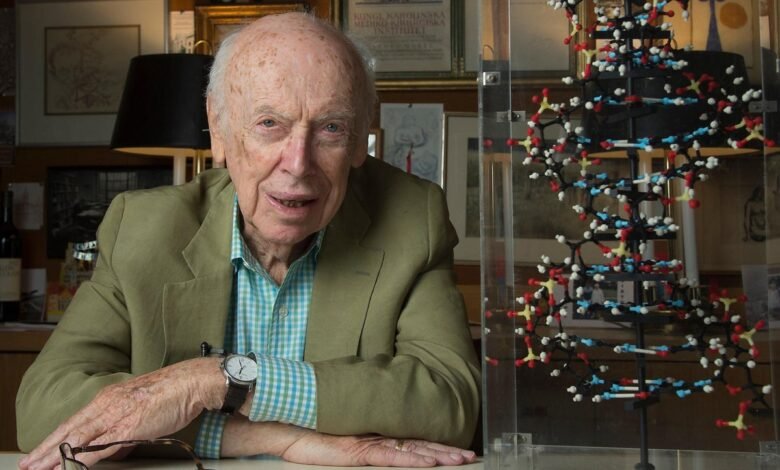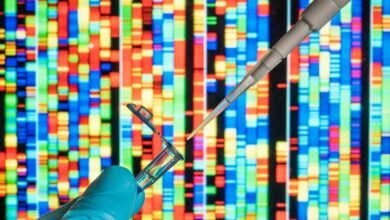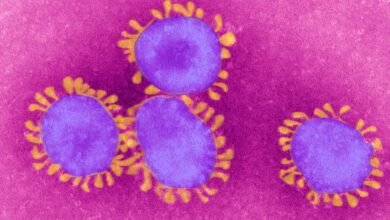
November 7, 2025
2 min read
James Watson, Who Helped Discover the Structure of DNA, Is Dead at Age 97
James Watson’s work on the discovery of the double-helix structure of DNA led to a revolution in biology and genetics

James Watson in his office at Cold Spring Harbor Laboratory on June 10, 2015.
J. Conrad Williams, Jr./Newsday RM via Getty Images
James Dewey Watson, a molecular biologist whose work helped decode the structure of DNA, died on November 6, 2025, at a hospice in East Northport, N.Y. He was 97 years old.
Watson was best known for his contributions to the 1953 discovery of the double-helix structure of DNA, revealed when he and molecular biologist Francis Crick published their research in Nature. The discovery showed how genetic information is stored and replicated and launched a new era of molecular genetics and biotechnology.
Watson was born in Chicago on April 6, 1928. He entered the University of Chicago at age 15, earned a degree in zoology and then completed his Ph.D. at Indiana University in 1950. In 1951 he joined the Cavendish Laboratory at the University of Cambridge in England, met Crick and began to collaborate on research into the nature of DNA.
On supporting science journalism
If you’re enjoying this article, consider supporting our award-winning journalism by subscribing. By purchasing a subscription you are helping to ensure the future of impactful stories about the discoveries and ideas shaping our world today.
Their big breakthrough relied heavily on x-ray diffraction data produced by chemist Rosalind Franklin and biophysicist Maurice Wilkins at King’s College London. Watson shared the 1962 Nobel Prize in Physiology or Medicine with Wilkins and Crick, and Franklin only received proper credit for her contribution much later.
Watson later joined Harvard University’s biology faculty, where his research focused on understanding messenger RNA. In 1968 he was named director of Cold Spring Harbor Laboratory, which he helped turn into a leading center for genetics research.
Watson was author of several books, including The Double Helix and Molecular Biology of the Gene.
His legacy was complicated by repeated racist remarks that linked race and intelligence. Those statements led to his resignation from Cold Spring Harbor in 2007.
It’s Time to Stand Up for Science
If you enjoyed this article, I’d like to ask for your support. Scientific American has served as an advocate for science and industry for 180 years, and right now may be the most critical moment in that two-century history.
I’ve been a Scientific American subscriber since I was 12 years old, and it helped shape the way I look at the world. SciAm always educates and delights me, and inspires a sense of awe for our vast, beautiful universe. I hope it does that for you, too.
If you subscribe to Scientific American, you help ensure that our coverage is centered on meaningful research and discovery; that we have the resources to report on the decisions that threaten labs across the U.S.; and that we support both budding and working scientists at a time when the value of science itself too often goes unrecognized.
In return, you get essential news, captivating podcasts, brilliant infographics, can’t-miss newsletters, must-watch videos, challenging games, and the science world’s best writing and reporting. You can even gift someone a subscription.
There has never been a more important time for us to stand up and show why science matters. I hope you’ll support us in that mission.
Source link




